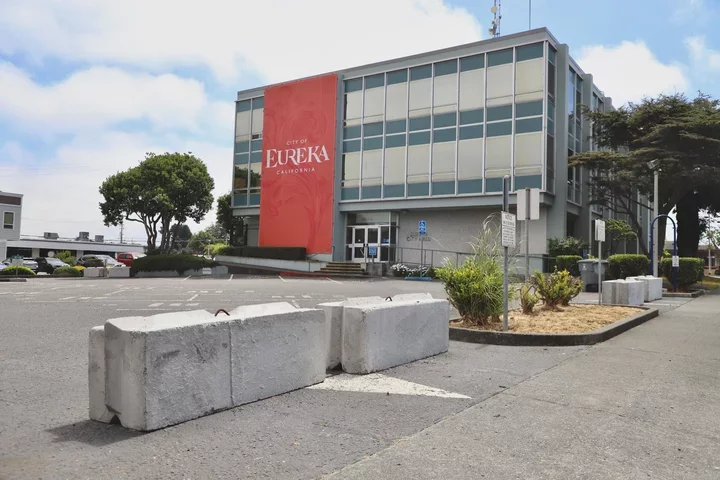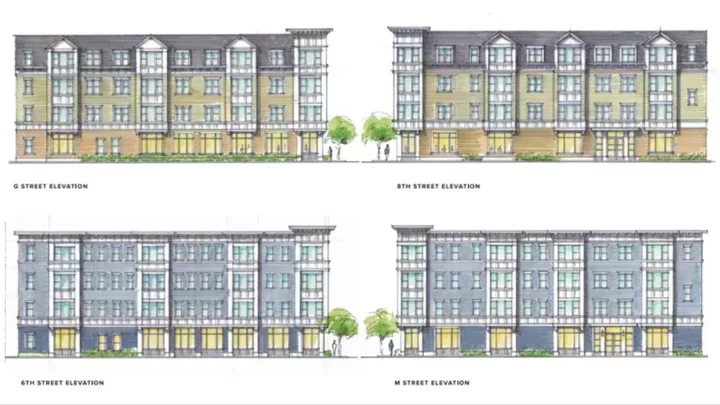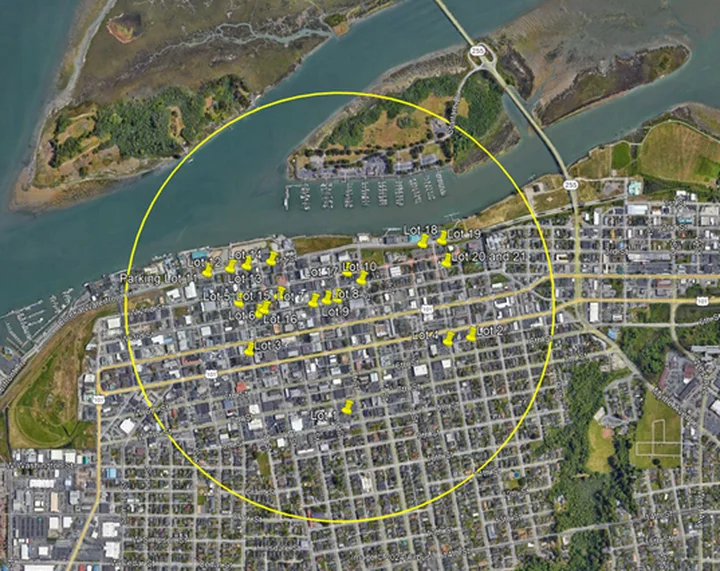UPDATE, Nov. 4, 11:55 a.m.:
This morning, Measure F spokesperson Gail Rymer sent a follow-up email saying the city leaders quoted below are citing state law incorrectly. She goes on to say:
In the interest of objectivity and general backgrounding, I wanted to provide you with some facts on a couple of specific points.
City leaders, including City Manager Miles Slattery and Planning Director Cristin Kenyon, appear in your article to either misunderstand state law or are misrepresenting state law in order to dissuade voters from approving Measure F.For example, Slattery’s statement regarding certain projects, such as the Linc Housing project, being “vested” merely because the City has issued some approvals for the projects is false, and conflicts with a nearly 40-year-old ruling by the California Supreme Court case that defines exactly when a development project becomes vested.
Under this ruling, called the “Avco Rule”, none of the “approved” projects are vested merely because the City has issued certain approvals. Senate Bill 330, referenced by Ms. Kenyon, may have some vesting effect for the Linc Housing and EaRTH Center projects, but not for any of the other lots for which no SB 330 applications have been submitted.
Lastly, all of the statutes cited by Mr. Slattery relating to proximity to a transit hub relate to parking requirements specific to a proposed eligible housing project; none relate to maintenance of an existing public parking lot. In this regard, probably the most accurate statement by Mr. Slattery is that, should the City insist on disregarding City voters, this issue will be decided by the courts.
At the end of the day, everyone in Eureka cares about housing and the future economic vitality of Eureka, both important components of this special community. We believe Measure F provides the best solution for both.
###
In response to these statements from Rymer, Eureka Development Services Director Cristin Kenyon sent an email saying:
City Staff’s intent is to educate voters based on the facts as we understand them. Both the Linc Housing and Earth Center projects have submitted SB330 pre-applications, so it sounds like we are agreeing those projects are vested.
###
Original post:
Security National last year paid $650,000 to buy the parking lot in front of Eureka City Hall. The company keeps it blockaded to prevent anyone from parking there. | File photo by Andrew Goff.
###
Rock always beats scissors; paper always beats rock; and when it comes to regulating housing and transportation, state law will always beats local regulations.
That’s why Eureka City Manager Miles Slattery believes that even if voters pass Measure F next Tuesday, the initiative won’t achieve its main goal of preserving all the parking spaces on 21 city-owned lots downtown (and, in the process, stymieing a planned transit hub and several in-progress affordable housing developments).
“I’m sure a certain individual will sue us regardless,” Slattery said, referring to semi-local kazillionaire Rob Arkley, whose company Security National has poured more than $1.6 million into the Measure F campaign. “But, yes,” Slattery continued, “there are multiple reasons why those properties are already vested.”
He was referring specifically, in this case, to the three locations of Linc Housing’s Eureka Scattered Site Project — which will see apartment developments on parcels at 8th and G streets, 6th and M streets, and Myrtle and Sunny avenues — and by “vested” he means that the developer’s right to proceed as planned is secure.
Why? Several reasons, he said. For one, the Linc Housing project already has its discretionary permit approvals, and according to Eureka’s municipal code, “Projects with valid permits or approvals shall be completed in compliance with the standards in effect at the time of approval.”
The Linc Housing project was approved after the city council voted to “surplus” the underlying parking lot parcels, thereby removing the parking spaces from the city’s official inventory, according to Slattery.
“And then furthermore,” he said, “there’s a law called SB 330 … which does the same things as that.” That law, The Housing Crisis Act of 2019, prohibits local jurisdictions from enacting new laws that would lower the maximum amount of new housing allowed in their borders, or delay new housing via regulatory barriers.
A conceptual rendering of the EaRTH Center plans approved in 2022. | Screenshot.
###
Slattery said SB 330 would apply to EaRTH Center, a multi-story housing and transit development slated for the city-owned parking lots behind Lost Coast Brewery & Cafe.
In an email, Eureka Development Services Director Cristin Kenyon listed several other laws that she says would supercede Measure F. A provision of California’s Housing Accountability Act, for example, says the city must accept preliminary application for any housing development project, and when it does so, it locks in the developer’s right to develop under whatever regulations were in effect at the time of submittal.
And since the city’s current regulations don’t require parking at any of the Linc project sites, new parking requirements can’t be added later, Kenyon says.
Furthermore, she adds, California’s Density Bonus Law says the city must waive parking requirements for deed-restricted affordable housing projects if doing so would cut costs.
Conceptual designs for the Linc Housing projects at 8th and G streets and 6th and M streets. | File images via City of Eureka.
###
But what about all the other parking lots listed in Measure F?
Slattery and Kenyon both point to Assembly Bill 2097, passed in 2022, which “prohibits a public agency from imposing or enforcing any minimum automobile parking requirements on a residential, commercial, or other development project if the project is located within one-half mile of a major transit stop.”
It just so happens that Eureka has designated a major transit stop at the future site of the EaRTH Center (H and Third streets). Back in January, the Humboldt County Association of Governments (HCAOG) updated its regional transportation plan, dubbed VROOM, to include seven major transit stops, three of which are in Eureka. (The other two are located at the Bayshore Mall and the corner of Harris and F streets.)
But it’s the one at the future EaRTH Center site that negates the parking lot restrictions in Measure F, according to Slattery.
“All 21 of the lots listed in Measure F are within a half a mile of that major transit hub,” he said.
Here’s a map showing the half-mile radius of that hub, with yellow pins identifying all 21 of the parking lots in in Measure F:
Map via the City of Eureka.
###
Not surprisingly, Measure F’s backers disagree with this analysis.
“Mr. Slattery is not correctly reading and interpreting Measure F or state law,” said a statement emailed by campaign spokesperson Gail Rymer. “There is a difference between preserving existing public parking and imposing new parking requirements for residential units.”
The campaign argues that Measure F does the former, not the latter, and the statement sent by Rymer adds that the measure “allows the City to comply with its own ordinances and state law in determining whether or not to require additional parking spaces for tenants of the proposed affordable housing units.”
Kenyon, however, said the spaces in those 21 lots should not be considered “existing public parking.” She noted that Eureka’s city council already voted to surplus those parcels, finding that they are “no longer necessary for agency use,” and voted to remove those sites from its assessment district.
“There is nothing in our current agreements with the affordable housing developers or in our General Plan or Zoning Code that requires any public parking to be retained on these parcels,” Kenyon said in an email. “Regardless of whether it’s earmarked for public or private parking, requiring retention of the spaces would be a new parking requirement.”
Slattery, meanwhile, says state law does not differentiate between “new” and “existing” parking. He pointed to Gov. Code 65863.2(a), which reads, “A public agency shall not impose or enforce any minimum automobile parking requirement on a residential, commercial, or other development project if the project is located within one-half mile of public transit.”
“Ms. Rymer’s statement that the City could force development projects to keep the existing parking is inconsistent with the plain language of the statute, and she cites no legal authority to support it,” Slattery wrote in an email.
Regardless, as he predicts, this disagreement seems likely to wind up in a court of law.
What about the Jacobs campus?
The other major provision of Measure F, besides creating an Off-Street Public Parking (OSPP) Overlay Designation on those 21 lots, involves the former Jacobs Middle School campus, a vacant 14-acre property at 674 Allard Avenue. It’s owned by Eureka City Schools.
Measure F would create another overlay designation authorizing a wide variety of residential and commercial uses there. The heavy-handed sales pitch of the Measure F campaign has been reliant on the prospect of putting affordable housing developments down there, at the south end of Eureka, rather than downtown.
This proposal was more plausible when a mystery developer was in escrow to acquire 8.1 acres of the Jacobs property. But when that deal collapsed in August, the school district went back to its previous high bidder, California’s Department of General Services (DGS), which is looking to acquire the property for a new regional headquarters for the California Highway Patrol.
Slattery said he recently attended a meeting with staff from Eureka City Schools and was told that DGS is working to finalize the details of an offer to be presented to the district’s board of trustees. If the deal is approved, the state would not be required to build any housing whatsoever at the Jacobs parcel because state agencies are not beholden to local zoning rules.
“And I would venture to say that other than [working out the] details, Jacobs is going to be a CHP property,” Slattery said, though he acknowledged that any sale depends on board approval.
Reached by phone, the district’s executive assistant in the Superintendent’s Office, Micalyn Harris, confirmed that talks between DGS and the district are ongoing. “The ball’s in their court,” she said, referring to the state agency. “When they provide the contract, we will take it to the board for consideration.”
Harris said she’s not sure if that will happen at the board’s Nov. 14 meeting or perhaps its Dec. 12 meeting.
For the time being, Slattery said the city’s not going to let Measure F interfere with its plans.
“We’re going to construction with the Linc project [locations] — all three of them — in February of 2025, regardless of what happens,” he said. “Now, will he sue us and try to prevent that? I’m sure. Will he try to delay it? I’m sure. Whether F passes or not he’s going to try and do that.” (Slattery never mentioned Arkley by name.)
But the city manager said Measure F could still wreak havoc if it passes.
“From a practical standpoint and being able to build it might not matter, but it definitely screws us as far as our housing element,” Slattery said. “It automatically removes these [21] properties from our housing inventory.”
State regulators and local officials alike have warned this could cause Eureka’s housing element to fall out of compliance with state law, costing the city millions of dollars in grant funds, opening itself up to litigation from the attorney general’s office and potentially triggering the “builder’s remedy,” which would strip away all local control for regulating affordable housing developments.
Regardless of what voters decide with regard to Measure F, Eureka’s pitched battle between housing and parking is unlikely to end on Tuesday.




CLICK TO MANAGE